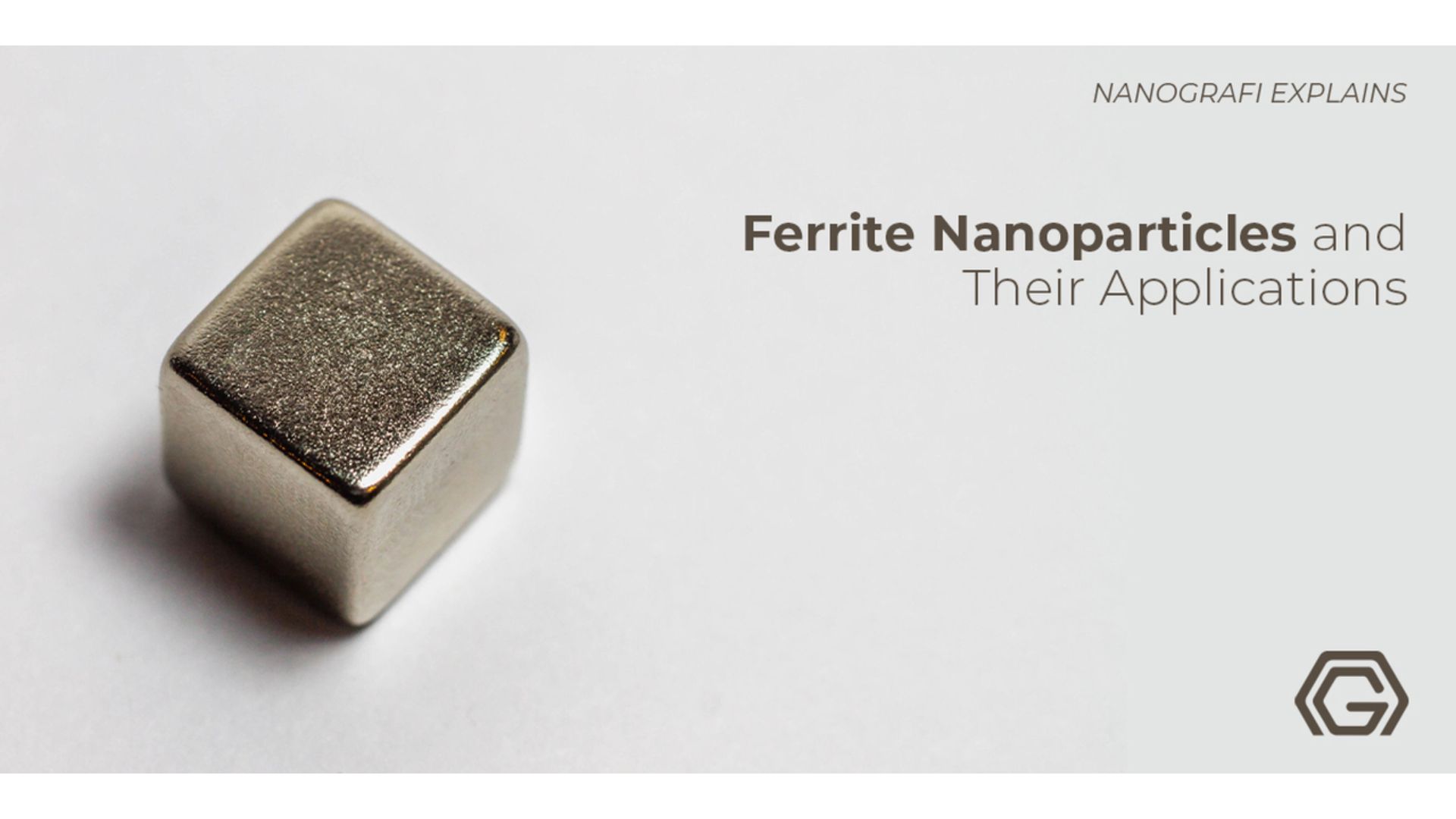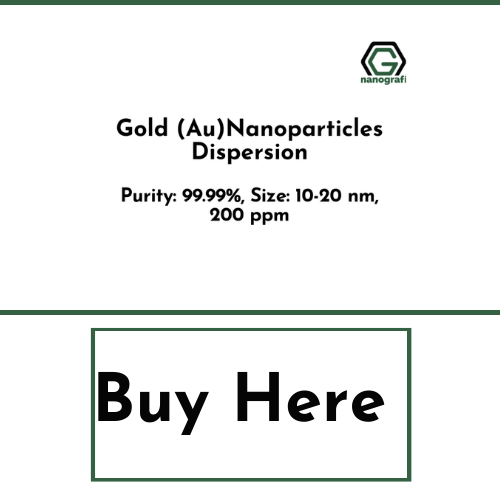Explained: Gold Dispersion
Gold primarily based nanoparticles, due to their distinctive optical properties at the nanoscale, biocompatibility, and enhanced surface chemistry, have caught significant attention from the material science and biomedical community.
Although colloidal gold has been used since old times in different therapeutic applications, a more robust understanding of the physical attributes of nanosized gold has caused an increase of research efforts within the past two decades involving their synthesis and biomedical applications.
Introduction
Gold Nanoparticle Dispersions are suspensions of gold nanoparticles in water or various organic solvents like ethanol or mineral oil. Within the realm of nanotechnology and nanomedicine, gold nanostructures are, without any doubt, the first extensively investigated ones attributable to their versatility. This versatility stems from a variety of desirable characteristics that gold possesses within the nano-dimension. It includes their distinctive optical, electronic properties, catalytic and anti-microbial properties, non-immunogenicity, facile surface chemistry, and bio-compatibility. Colloidal gold has been used since precedent days as stuff attributable to their vivacious size and concentration-dependent multiple colors (yellow, ruby red, orange, maroon, etc.), with the glass decoration in churches being an outstanding example.
Colloidal gold was additionally used extensively in precedent days for medical uses, for instance, the 'elixir' drink utilized in ancient Egypt as what was believed to be a 'rejuvenating potion,' pulverized gold mixed with drinks for the treatment of sore limbs (arthritis) in medieval Europe, for the treatment of alcoholism and several addictions in the nineteenth-century United States, etc. In the present world, with the recent growing awareness of the importance of nanotechnology in medication and health care, the applications of gold nanoparticles have increased exponentially, from the analysis of body fluids and cells for the identification of biochemical signatures indicative of diseases to the diagnosis and targeted treatment of cancer. Overall, nanoparticulate gold has both diagnostic and therapeutic capabilities, the two helpful aspects that scientists are presently attempting to combine along into what's called 'theranostic' medication.
Background
Gold has fascinated the human race and is accounted for as valuable for centuries now. Research states that colloidal gold nanoparticles are utilized for hundreds of years by many artists for spirited colors, that are made by their interaction with light. Gold colloids are familiar since the past for his or her fascinating properties and colors that today will be connected to the presence of metal nanoparticles.
In the year of 1850s, researchers started examining their properties in further detail. It starts from the pioneering research of M. Faraday and W. Ostwald; gold nanoparticles have been an important topic because of their easy preparation and high stability.
Gold is placed in Block D of the periodic table. It's a soft metal which is typically alloyed to enhance the strength. It is an excellent conductor of electricity and heat. It has good reflection properties of infrared and behaves chemically inert. The gold nanoparticle's versatile surface properties that allow them to be coated with tiny molecules, polymers, and biological recognition molecules, thus increasing their number of usages. Gold nanoparticle's morphology is spherical, and it looks like a brown powder.
Properties of Gold Dispersions
Due to size, surroundings, and physical dimensions, the interaction of gold nanoparticles with the light is strong. Light rays oscillating electrical fields propagate close to a colloidal nanoparticle when it's moving with the free electrons meanwhile inflicting a collective oscillation of charged electrons, which is in resonance with light's frequency. Those resonant oscillations are called surface plasmons. For tiny (~30nm) monodisperse gold nanoparticles, light absorption is caused by the development of surface plasmon resonance within the spectrum's blue-green portion (~450 nm) whereas red light (~700 nm) is reflected, resulting in a color that's a rich red. As the size of the particle will increase, the surface plasmon resonance's wavelength will connect absorption shifts to redder, longer wavelengths.
The blue light will reflect meanwhile red light will get absorbed, resulting in a solution of color, pale blue, or purple. As the size of the particle continues to expand toward the majority limit, the wavelength of surface plasmon resonance will go into the spectrum's IR portion and wavelengths that are most visible will be reflected, giving translucent or clear color to the nanoparticles. The surface plasmon resonance is tuned by varying nanoparticles dimension or appearance, leading to particles with tailored optical properties for many fields.
This growth is only seen when salt is mixed more than the solution of gold. Gold nanoparticle surface charge becomes neutral, causing aggregation of nanoparticles. As a result, the color of the solution turns from red to blue. To attenuate aggregation, gold nanoparticles' versatile surface chemistry permits tiny molecules, polymers, and biological recognition molecules to coat them. Modification of surface allows gold nanoparticles to be widely used in applications in chemical, biological, medical, and engineering.
From the past many years, electrical properties of gold nanoparticles were under extensive study; electron movement isn't limited to energy levels of individual atoms. Also, it displays itself as a continuum energy level. Hence, charging of surface and process of electron movement in gold nanoparticles could be understood with comparatively usual physical expressions, as for diagrams of capacitor/resistance electronic circuit. The gold nanoparticles' electrical properties solely rely on its surrounding medium and size, which is utilized for numerous usages, for instance, electronic chips and electrical biosensors.
To get more information about nanoparticles,
you can read our blog post here.
Applications of Gold Dispersions
Gold Dispersions gives a significant chance for medicine application, not solely to pharmaceutics approaches, however additionally as novel diagnostic and therapeutic strategies. One of the vital issues is concerning their safety in clinical applications. Gold Metal Dispersion size is an exceptionally essential parameter influencing the nanoparticle uptake and cellular internalization. Below are some of the vital uses of gold dispersions.
1. Therapy
Due to SPR's result, Gold nanoparticles dispersion will powerfully absorb the light, which will expeditiously be transformed into heat by the processes of phonon–phonon and quick electron-phonon, which makes it great for photothermal treatment of different diseases like cancer. For instance, once gold nanoparticles get excited by at wavelengths from 700 to 800 nm by light, they will absorb near-IR to form heat and then eliminate tumors. Gold nanoparticles are often exactly accumulated in tumor cells to treat targeted tumors because of the improved permeability and retention impact and also the explosion to the suitable laser light that contributes to the "see and treat" approach.
2. Delivery of gene and drug
Therapeutic agents combined with Gold nanoparticles dispersion improve the "free" drug's pharmacology and give sustained or controlled unleash characteristics, that make them an appealing tool delivering the drug and genes. Gold nanoparticles' large surface-area-to-volume allow many molecules, as well as anti-fouling polymers, medicines, and targeting agents to coat its surface. Mainly, assembly gold nanoparticles combined from desoxyribonucleic acid (DNA) are successfully used as useful tools for gene transfection.
3. Probes
They are used as probes widely for staining of immunogold in transmission microscopy (TEM) because of the high density of electron. Furthermore, the many SPR-based light dispersion makes gold nanoparticles probes for research in dark-field microscopy and Raman spectroscopy. Numerous researches have established that because of their surface-enhanced Raman scattering applications, two-photon luminescence imaging, and light-scattering imaging, the gold nanoparticles are very useful probes for cancer imaging.
4. Sensors
They are also used as probes for quantitative chemical analysis. Usually, gold nanoparticle biosensing is predicted on receiving molecule interaction on nanoparticles with a cross-linker, or once a substance is added, the interaction between nanoparticles containing receptors. Notably, gold nanoparticles protected by bovine albumen are introduced because the ratiometric fluorescent explores for detection of in vivo. This technique may even be used for the detection of pollutants, proteins, and alternative label-free molecules.
5. Diagnostics
They are used as distinction agents for diagnosing cancers, infectious agents, and heart diseases. For gold nanoparticles, X-ray computer tomography (CT) could be a standard tool of imaging for detection of in vivo, that is employed to ascertain variations in the density of tissue that gives image distinction by attenuation in X-ray between electron-dense bone and soft tissues. Gold nanoparticles co-jointly display better signal stability and intensity once acting for NIR imaging because of the promising materials.
Gold nanoparticles are foremost usually used nanoparticles for lateral flow assays. Because of their superior optical characteristics, detection with the human eye is often achieved with excellent sensitivity. The test also can be tailored to run each in competitive and non-competitive mode.
6. Photocatalyst
In many chemical reactions, Gold nanoparticles dispersion can be used as photocatalysts due to surface plasmon resonance, gold nanoparticles surface can also be used for selective oxidization or to cut back a reaction in some instances. Usually, gold nanoparticles are raised as photocatalyst with the mixing of titanic oxide, which might be helpful within the chemical industry.
Catalysis
In numerous chemical reactions, Gold nanoparticles can be used as catalysts. The gold nanoparticle surface can be used for localized oxidation; sometimes, it can even reduce a reaction (nitrogen oxides). Gold nanoparticles are being evolved for energy fuel cell applications. This technology is beneficial in the automobile and displays the product industry.
Conclusion
To conclude, Gold nanoparticles dispersions are active substances for a wide variety of uses with remarkable physical and electronic properties because of advanced manufacturing procedures. Furthermore, it's easy to change their surface chemistry; such capabilities make gold nanoparticles the most broadly used nanomaterial for paper in the academic area and an essential part in medical equipment and industrial applications worldwide.
To get more information, you can visit Blografi.
References
https://link.springer.com/chapter/10.1007%2F978-3-211-75125-1_21
https://innovareacademics.in/journals/index.php/ijpps/article/view/9343/6175
https://www.cd-bioparticles.com/t/Properties-and-Applications-of-Gold-Nanoparticles_59.html
Recent Posts
-
Nanocomposites in Food Packaging
The utilization of nanocomposites in food packaging represents a significant advancement in the fiel …19th Apr 2024 -
What is the Difference Between 7075 and 6061 Aluminum Alloy?
When comparing 7075 aluminum alloy to 6061 aluminum alloy, it's essential to understand their disti …5th Apr 2024 -
Iron-Air Batteries: The Ultimate Guide
Iron-air batteries represent a significant breakthrough in energy storage technology, offering a sus …29th Mar 2024







